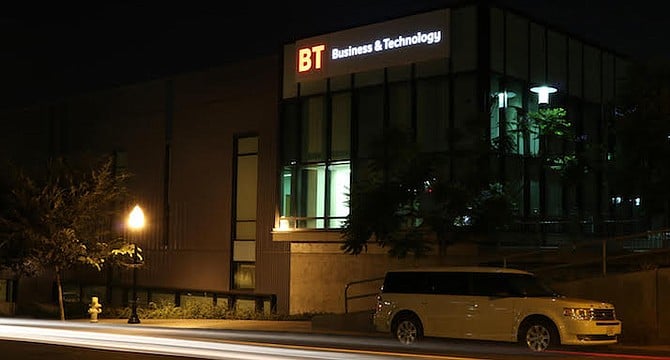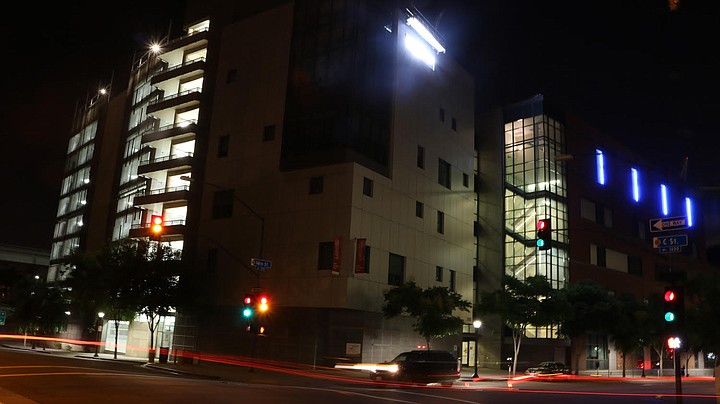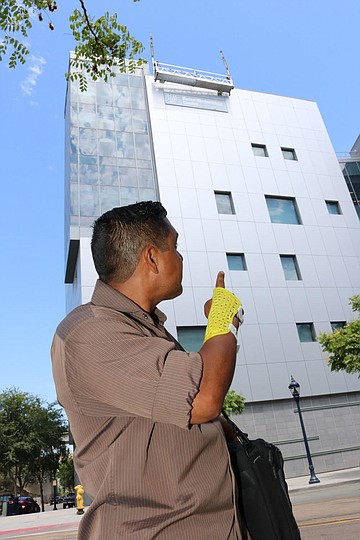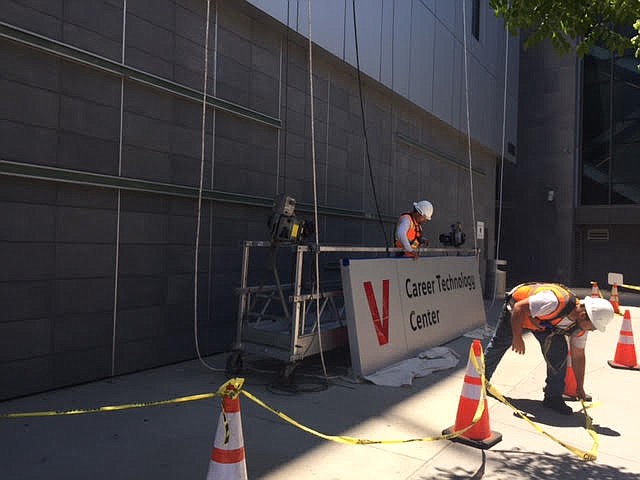 Facebook
Facebook
 X
X
 Instagram
Instagram
 TikTok
TikTok
 Youtube
Youtube

Many of the cosmetology students at City College were impressed with the new signage being installed on their Career Technology building.

“OMG, $50,000 per sign?” Corinne said, ” I saw them installing it the day before, but they never finished this one.”

On July 18, Corinne and her classmates walked across 16th Street to the Math and Science Building to get some snacks. “I thought the [previous] signs got people where they needed to be, and there are things that we are lacking in our school,” she said, “like [a bigger] janitorial staff, which would also give more jobs.”

The total cost of construction for the new campus signs is $823,500.
“That cost includes materials and fabrication of the signs,” said Tom Fine, “as well as the costs for labor, equipment and permitting to install them. Because the signs are typically installed at the tops of the buildings, the contractor is required to position lifting equipment (cranes) within the public right of way to make the installations. As such, they are required to obtain city approval and permits to close traffic lanes and sidewalks.”
Fine is the City College Campus project manager. “This project is funded under the Prop N — City College Infrastructure project,” he said, “there are 16 signs, so the total cost per sign is about $51,469.”
Voter-approved Proposition N was an $870 million construction bond program that passed in 2006 to help transform the San Diego Community College campuses.
“They could’ve bought a lot of new computers with that money,” said Juan Carlos Jimenez Cruz, who is taking six units this summer to complete his urban studies degree. “Even if the price is kinda high I understand what they are trying to do — they are blending in with the times and they want to modernize the campus even more to compete with the other colleges,” he said.
The new signs are made of a steel framing with aluminum bodies, and then paired with acrylic to create the red-and-white translucent lettering. LED (light-emitting diode) lights are used to illuminate the 20′ X 5′ signs which need to be large enough so the students, faculty and visitors can see them from afar. LEDs were said by Fine to be 80 percent more efficient than the standard, incandescent lighting.
“It doesn’t hurt that ‘AH’ are my initials,” said Alan Hickey, a photography major, “so who doesn’t like seeing their name in [the] lights.” He was referring to the new Arts and Humanities building sign mounted atop the building where he has photographed for his school newspaper and magazine. Hickey said that he capitalizes on the urban landscape of the campus (to utilize as a backdrop), and more so on the various light sources emitting from the buildings, stairways and the newly installed signs.
Fine said that a few more signs will be installed on campus in the near future: the Science building monument sign at 16th and B Streets, the Math and Social Sciences monument sign at 16th and C Streets, the Career Technology building sign on top of the building on 16th Street and the Career Technology monument sign at 16th and C Streets.


Many of the cosmetology students at City College were impressed with the new signage being installed on their Career Technology building.

“OMG, $50,000 per sign?” Corinne said, ” I saw them installing it the day before, but they never finished this one.”

On July 18, Corinne and her classmates walked across 16th Street to the Math and Science Building to get some snacks. “I thought the [previous] signs got people where they needed to be, and there are things that we are lacking in our school,” she said, “like [a bigger] janitorial staff, which would also give more jobs.”

The total cost of construction for the new campus signs is $823,500.
“That cost includes materials and fabrication of the signs,” said Tom Fine, “as well as the costs for labor, equipment and permitting to install them. Because the signs are typically installed at the tops of the buildings, the contractor is required to position lifting equipment (cranes) within the public right of way to make the installations. As such, they are required to obtain city approval and permits to close traffic lanes and sidewalks.”
Fine is the City College Campus project manager. “This project is funded under the Prop N — City College Infrastructure project,” he said, “there are 16 signs, so the total cost per sign is about $51,469.”
Voter-approved Proposition N was an $870 million construction bond program that passed in 2006 to help transform the San Diego Community College campuses.
“They could’ve bought a lot of new computers with that money,” said Juan Carlos Jimenez Cruz, who is taking six units this summer to complete his urban studies degree. “Even if the price is kinda high I understand what they are trying to do — they are blending in with the times and they want to modernize the campus even more to compete with the other colleges,” he said.
The new signs are made of a steel framing with aluminum bodies, and then paired with acrylic to create the red-and-white translucent lettering. LED (light-emitting diode) lights are used to illuminate the 20′ X 5′ signs which need to be large enough so the students, faculty and visitors can see them from afar. LEDs were said by Fine to be 80 percent more efficient than the standard, incandescent lighting.
“It doesn’t hurt that ‘AH’ are my initials,” said Alan Hickey, a photography major, “so who doesn’t like seeing their name in [the] lights.” He was referring to the new Arts and Humanities building sign mounted atop the building where he has photographed for his school newspaper and magazine. Hickey said that he capitalizes on the urban landscape of the campus (to utilize as a backdrop), and more so on the various light sources emitting from the buildings, stairways and the newly installed signs.
Fine said that a few more signs will be installed on campus in the near future: the Science building monument sign at 16th and B Streets, the Math and Social Sciences monument sign at 16th and C Streets, the Career Technology building sign on top of the building on 16th Street and the Career Technology monument sign at 16th and C Streets.
Comments